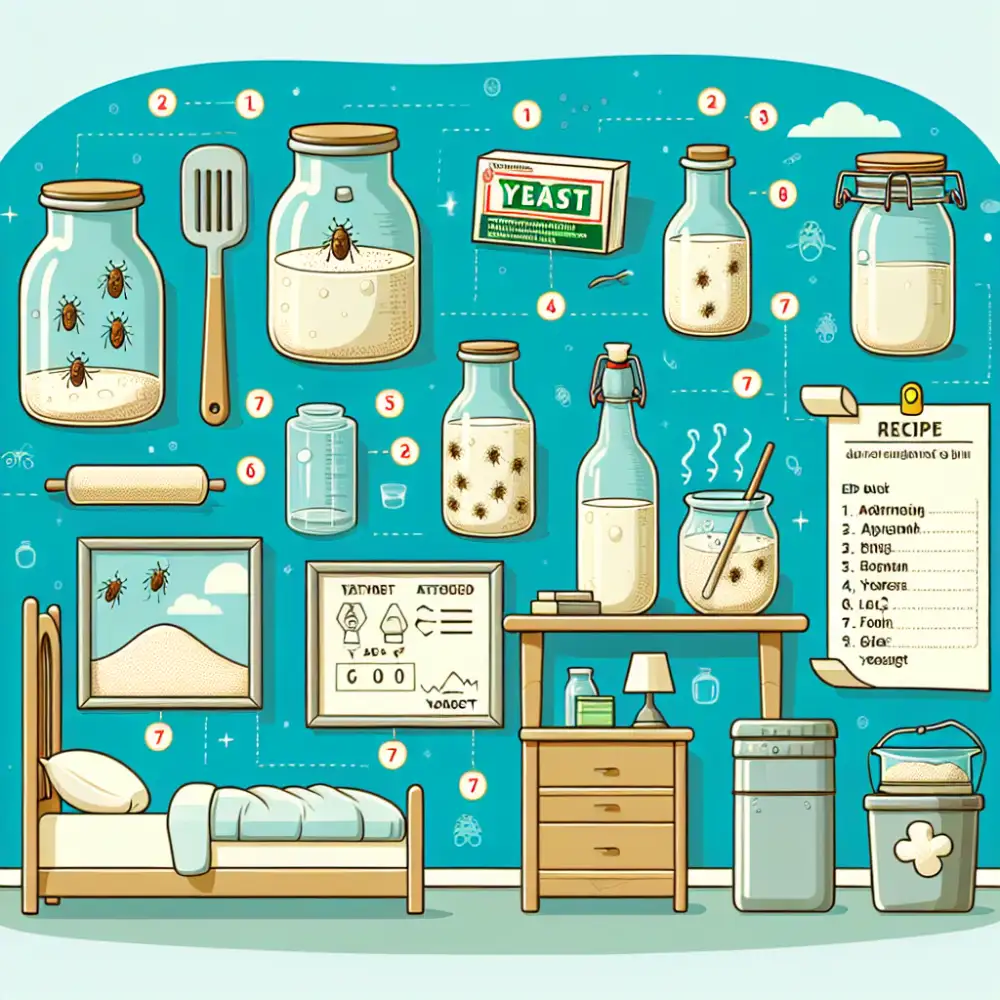Banish Bed Bugs with This DIY CO2 Trap Yeast Recipe

Bed Bugs: A Growing Problem
Bed bugs are small, nocturnal insects that feed on the blood of humans and animals. They are a growing problem worldwide, particularly in urban areas. Bed bugs are experts at hiding and can live for months without food, making them difficult to control. They are transported easily in luggage, clothing, and furniture, allowing them to spread quickly. Infestations are not a sign of uncleanliness, as bed bugs can be found in even the cleanest of environments. While bed bugs are not known to transmit diseases, their bites can cause itchy welts and lead to anxiety, stress, and insomnia in some individuals. If you suspect a bed bug infestation, it is important to contact a qualified pest control professional for proper identification and treatment.
What Attracts Bed Bugs?
Bed bugs are attracted to warmth, carbon dioxide, and certain chemicals we emit in our sweat and on our breath. They are particularly active at night, using these cues to locate sleeping humans or animals as a source of food. While they don't fly, bed bugs are adept crawlers and can easily travel between rooms and even neighboring dwellings in search of a meal. Contrary to popular belief, a cluttered or dirty environment doesn't attract bed bugs, although it can make them harder to detect and eliminate. They are just as likely to infest a spotless home if given the opportunity.
Yeast CO2 Traps: How They Work
Yeast CO2 traps, often used in conjunction with airlocks in homebrewing, offer a simple yet effective way to isolate fermentation and prevent oxidation. They work based on the principle of pressure differential. As yeast consumes sugar during fermentation, it produces carbon dioxide gas. This gas builds up pressure inside the fermenter. A CO2 trap, filled with a liquid like water, provides an escape route for this gas. The pressure from the CO2 pushes its way out through the trap, while the liquid barrier prevents oxygen from entering the fermenter. This process ensures a clean fermentation environment, protecting the beer or wine from off-flavors caused by oxidation.
DIY Bed Bug Trap Recipe
While professional pest control is always recommended for bed bug infestations, a DIY trap can be a useful tool for monitoring. Please note that these traps are not a solution for eliminating an infestation.
Here’s a simple recipe:
• You’ll need a bowl, tape (double-sided works best), and a sugary drink like soda or juice.
• Pour the drink into the bowl.
• Wrap the outside of the bowl with tape, creating a sticky surface that bed bugs will get trapped on.
• Place the trap near areas where you suspect bed bug activity, such as near beds or furniture.
Remember to check the trap regularly and dispose of any trapped insects properly.

Trap Placement and Safety Tips
When placing traps, prioritize safety and effectiveness. Set traps in areas with high rodent activity, like along walls or near entry points. Avoid placing traps where children, pets, or non-target animals could reach them. Always wear gloves when handling traps, bait, or captured rodents to minimize contamination risks. Consider using tamper-resistant bait stations, especially in areas frequented by children or pets. These stations enclose the trap and bait, reducing the risk of accidental exposure. After setting traps, wash your hands thoroughly with soap and water.
Monitoring and Maintaining Your Traps
Regular checks are key to successful trapping. Inspect your traps at least once a day, preferably in the morning. Look for signs of capture, such as disturbed bait or sprung traps. If you've caught a pest, dispose of it safely and reset the trap. For humane reasons, consider using catch-and-release traps if appropriate for your situation. Remember to wear gloves when handling traps and to wash your hands thoroughly afterwards.
Additional Bed Bug Control Measures
Vacuuming frequently can help remove bed bugs and their eggs. Pay close attention to areas where bed bugs hide, such as mattresses, carpets, and baseboards. After vacuuming, immediately dispose of the vacuum bag in a sealed plastic bag. Steam cleaning can kill bed bugs and their eggs on contact. Use a steamer with a temperature of at least 140°F (60°C) and apply steam to all areas where bed bugs may be present. Laundering bedding, clothing, and other washable items in hot water (at least 140°F/60°C) and drying them on high heat for at least 30 minutes can kill bed bugs. Consider using bed bug-proof mattress encasements to protect your mattress and box spring. These encasements create a barrier that prevents bed bugs from infesting or escaping.
Published: 13. 06. 2024
Category: lifestyle



